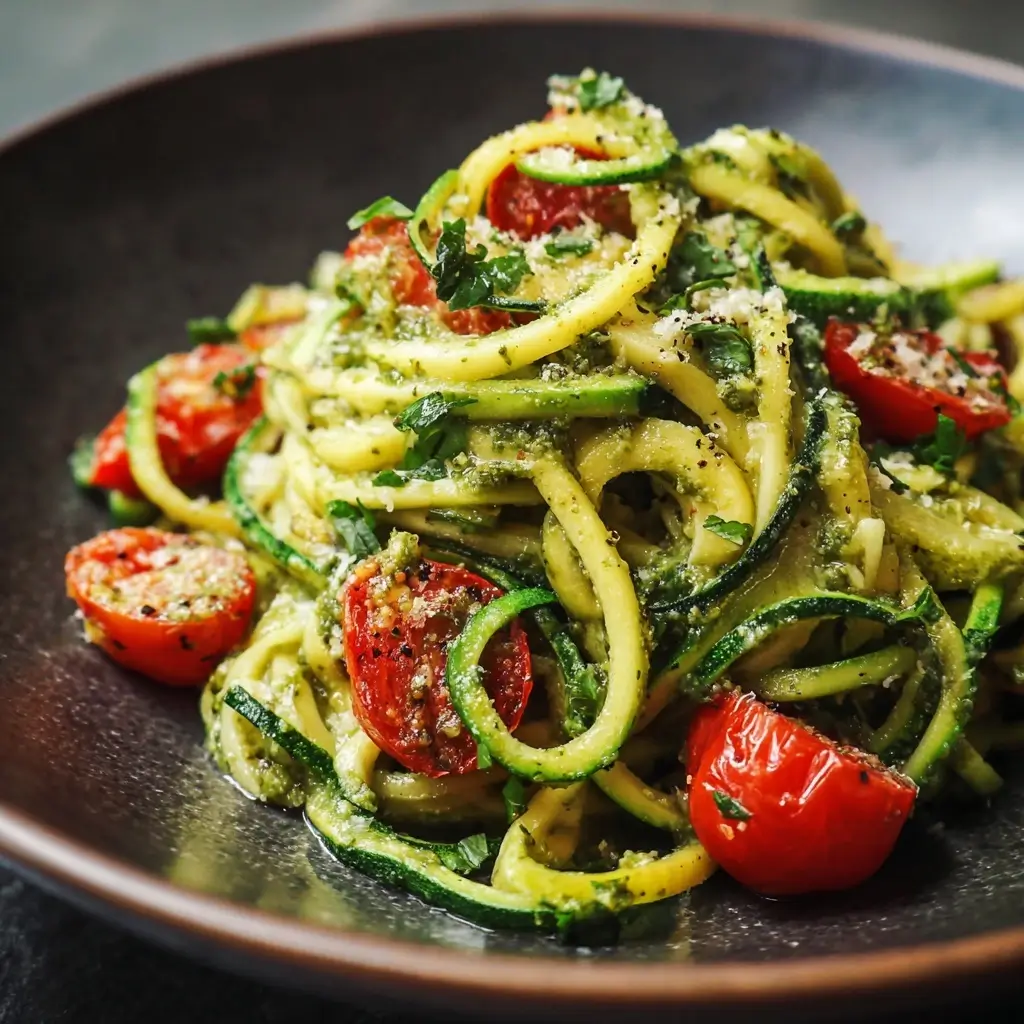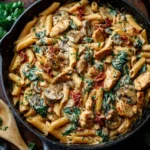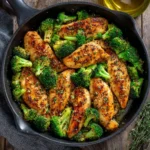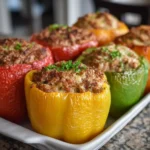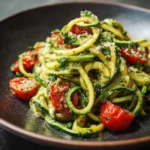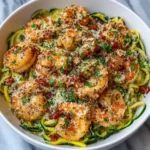Zucchini Noodles with Creamy Pesto: A Fresh, Healthy Delight
The History
The concept of transforming vegetables into noodle-like strands dates back centuries in various culinary traditions, particularly in Asian cuisines where root vegetables and greens were often julienned or spiralized for use in stir-fries and soups. However, the modern resurgence of vegetable-based noodles, especially zucchini noodles—commonly known as “zoodles”—emerged prominently in the early 2010s alongside the growing popularity of low-carb, gluten-free, and plant-forward diets. The rise of kitchen gadgets like spiralizers made it easy for home cooks to replicate pasta shapes using fresh produce.
Pesto, on the other hand, has deep roots in Italian cuisine, originating from Genoa in the Liguria region. Traditional pesto is made from fresh basil, pine nuts, garlic, Parmesan cheese, and olive oil, pounded together in a mortar and pestle. Over time, chefs and home cooks began experimenting with variations, incorporating ingredients like spinach, arugula, walnuts, or almonds. Combining zucchini noodles with creamy pesto represents a harmonious fusion of ancient techniques and modern wellness trends, offering a light yet satisfying alternative to traditional pasta dishes that honors both flavor and nutrition.
Ingredients Breakdown
- Zucchini: The star ingredient, zucchini is low in calories and carbohydrates while being rich in water content, vitamin C, and antioxidants. When spiralized, it mimics the texture of spaghetti and absorbs sauces beautifully.
- Fresh Basil: A fragrant herb essential to authentic pesto, basil provides a sweet, slightly peppery flavor and is loaded with anti-inflammatory compounds and vitamin K.
- Garlic: Adds depth and complexity to the pesto. Garlic is celebrated not only for its bold taste but also for its immune-boosting and heart-healthy properties.
- Pine Nuts (or Substitutes): Traditionally used in pesto, pine nuts lend a buttery richness and help create a creamy consistency. For cost-effective or allergen-friendly alternatives, walnuts, almonds, or sunflower seeds work wonderfully.
- Extra Virgin Olive Oil: Acts as the base of the pesto, providing healthy monounsaturated fats and enhancing the absorption of fat-soluble nutrients. Its fruity aroma complements the freshness of the herbs.
- Grated Parmesan Cheese: Offers umami depth and saltiness. It also contributes calcium and protein. For a vegan version, nutritional yeast can be substituted to achieve a similar savory profile.
- Lemon Juice: Brightens the sauce, balances the richness, and prevents the basil from oxidizing too quickly. It also adds a touch of vitamin C.
- Salt and Black Pepper: Essential seasonings that enhance all the flavors in the dish.
- Optional Add-ins: Cherry tomatoes, grilled chicken, sautéed mushrooms, spinach, artichoke hearts, or roasted red peppers can elevate the meal with added color, texture, and nutrients.
Step-by-Step Recipe
- Prepare the Zucchini Noodles: Wash 2–3 medium zucchinis thoroughly. Trim off the ends and use a spiralizer to cut them into noodle shapes. If you don’t have a spiralizer, a julienne peeler or even a sharp knife can work. Set the noodles aside on a clean kitchen towel or paper towels to absorb excess moisture.
- Salt the Zoodles (Optional but Recommended): Lightly sprinkle the zucchini noodles with sea salt and let them sit in a colander for 10–15 minutes. This draws out excess water, preventing a soggy final dish. After resting, gently press or pat them dry with paper towels.
- Make the Creamy Pesto: In a food processor or high-speed blender, add 2 cups of packed fresh basil leaves, 1/4 cup of pine nuts (or preferred nut), 2–3 cloves of garlic, 1/2 cup of grated Parmesan cheese, juice of half a lemon, and a pinch of salt and black pepper. Pulse several times to combine.
- Emulsify the Sauce: With the processor running, slowly drizzle in 1/3 to 1/2 cup of extra virgin olive oil until the mixture becomes smooth and creamy. For an even creamier texture, blend in 2–3 tablespoons of Greek yogurt, ricotta, or silken tofu (for a vegan option).
- Taste and Adjust: Stop blending and taste the pesto. Adjust seasoning by adding more salt, lemon juice, or cheese as needed. If the sauce is too thick, thin it with a tablespoon of water, almond milk, or reserved pasta water if cooking other components.
- Cook the Zoodles (Optional): While zucchini noodles can be served raw, lightly cooking them enhances texture and warmth. Heat a large skillet over medium heat with 1 tablespoon of olive oil. Add the zoodles and sauté for 2–3 minutes until just tender but still al dente. Avoid overcooking, which leads to mushiness.
- Combine: Pour the creamy pesto over the warm zoodles and toss gently to coat evenly. Alternatively, serve the pesto cold over raw noodles for a refreshing summer salad.
- Garnish and Serve: Divide among plates, top with extra Parmesan, a crack of black pepper, cherry tomato halves, or fresh basil ribbons. Serve immediately for the best texture and flavor.
Tips
- Choose Firm Zucchinis: Look for medium-sized zucchinis that are firm and glossy. Larger ones tend to have more seeds and higher water content, which can make the noodles watery.
- Dry the Noodles Well: Excess moisture is the enemy of a good zoodle dish. Salting and draining the noodles before use makes a noticeable difference in texture.
- Don’t Overcook: Zucchini noodles cook very quickly. Even residual heat can soften them, so remove from the pan as soon as they’re heated through.
- Customize the Creaminess: For a richer pesto, add a spoonful of mascarpone, cream cheese, or avocado. For a lighter version, stick to olive oil and yogurt.
- Prep Ahead: Spiralize zucchini in advance and store in an airtight container in the fridge for up to 2 days. Make pesto up to 5 days ahead and store in a jar with a thin layer of olive oil on top to preserve color and freshness.
- Freeze Pesto? Yes! Portion the pesto into ice cube trays, freeze, then transfer to freezer bags. Thaw as needed for quick meals.
- Serve Immediately: Zucchini noodles release water over time, especially when mixed with sauce. To maintain integrity, serve right after combining.
Variations and Customizations
- Vegan Creamy Pesto: Replace Parmesan with 3–4 tablespoons of nutritional yeast and use cashew cream or blended silken tofu instead of dairy-based creamers.
- Gluten-Free Friendly: Naturally gluten-free, this dish is perfect for those with celiac disease or gluten sensitivity—just ensure all added ingredients (like store-bought broth or cheese) are certified GF.
- Protein Boost: Add grilled chicken breast, shrimp, salmon, chickpeas, lentils, or crumbled tempeh to turn this into a hearty main course.
- Low-Fat Version: Reduce or omit nuts and cheese, increase greens like spinach or kale, and use vegetable broth to thin the pesto.
- Colorful Veggie Mix: Combine zucchini noodles with yellow squash, carrots, or beet noodles for a rainbow effect and diverse nutrient profile.
- Nut-Free Pesto: Use sunflower seeds or pumpkin seeds instead of pine nuts or other tree nuts to accommodate allergies.
- Herb Variations: Swap some basil with fresh parsley, cilantro, dill, or mint for a unique twist. Arugula adds a peppery kick.
- Spicy Kick: Blend in a small chopped jalapeño or red pepper flakes for heat lovers.
- Cheesy Variations: Try pecorino romano, manchego, or feta for different flavor profiles in the pesto.
- Serving Styles: Serve warm as a side or main, chilled as a pasta salad, or even stuffed into portobello mushrooms or bell peppers.
Health Considerations and Nutritional Value
Zucchini noodles with creamy pesto offer a nutritious, balanced meal that supports various dietary goals. One serving (approximately two medium zucchinis with 1/4 cup of homemade pesto) contains roughly:
- Calories: 220–280 kcal (depending on added proteins and oils)
- Carbohydrates: 10–15g (mostly complex carbs and fiber from vegetables)
- Fiber: 4–6g – aids digestion and promotes satiety
- Protein: 7–12g (higher with added cheese, nuts, or meat)
- Fat: 18–22g (primarily heart-healthy unsaturated fats from olive oil and nuts)
- Vitamins & Minerals: High in vitamin C, vitamin A (from beta-carotene in zucchini), vitamin K (from basil), potassium, and folate.
This dish aligns well with Mediterranean, keto (in moderation), paleo (if dairy is acceptable), and plant-based diets. It’s naturally low in sugar and sodium, though these can increase if using pre-made pesto or salty cheeses. The abundance of antioxidants from basil, garlic, and olive oil contributes to reduced inflammation and improved cardiovascular health. Omega-3 fatty acids from nuts support brain function, while the high water and fiber content of zucchini promote hydration and digestive wellness. For individuals managing blood sugar levels, this low-glycemic alternative to pasta helps prevent spikes and crashes. However, those with nut allergies should exercise caution, and people on blood thinners may need to monitor vitamin K intake due to its role in clotting.
Ingredients
- 2–3 medium zucchinis, spiralized
- 2 cups fresh basil leaves, tightly packed
- 1/4 cup pine nuts (or walnuts, almonds, or sunflower seeds)
- 2–3 garlic cloves
- 1/2 cup grated Parmesan cheese (or nutritional yeast for vegan)
- 1/3–1/2 cup extra virgin olive oil
- Juice of 1/2 lemon
- Salt and freshly ground black pepper, to taste
- 1 tablespoon Greek yogurt, ricotta, or silken tofu (optional, for creaminess)
- Optional additions: cherry tomatoes, grilled chicken, sautéed mushrooms, spinach, etc.
Directions
- Wash and spiralize the zucchinis. Place the noodles in a colander, sprinkle with salt, and let sit for 10–15 minutes. Pat dry with paper towels.
- In a food processor, combine basil, pine nuts, garlic, Parmesan, lemon juice, salt, and pepper. Pulse until coarsely chopped.
- With the motor running, slowly drizzle in olive oil until smooth. Add yogurt or alternative for creaminess and blend again.
- Taste and adjust seasoning, adding more lemon, salt, or cheese as desired.
- Heat olive oil in a large skillet over medium heat. Add zucchini noodles and sauté for 2–3 minutes until tender-crisp.
- Remove from heat and immediately toss with the creamy pesto until evenly coated.
- Divide into bowls, garnish with extra cheese, black pepper, and optional toppings.
- Serve warm or chilled, preferably immediately.
FAQ
Can I eat zucchini noodles raw?
Yes! Raw zoodles retain more nutrients and crunch. Just make sure to drain excess moisture and pair with a flavorful sauce like pesto.
How do I prevent watery zucchini noodles?
Salt them and let them sit in a colander before cooking. Also, avoid overcooking and serve promptly.
Can I freeze zucchini noodles?
Not recommended. Freezing breaks down their cell structure, leading to mushiness upon thawing. Pesto, however, freezes beautifully.
Is pesto healthy?
Homemade pesto with quality olive oil, nuts, and fresh herbs is nutritious and rich in healthy fats. Store-bought versions may contain additives and excess sodium—check labels.
What can I use instead of pine nuts?
Walnuts, almonds, cashews, sunflower seeds, or pumpkin seeds all work well and are often more affordable.
Can I make this recipe nut-free?
Absolutely. Use seeds like sunflower or pumpkin seeds in place of nuts for a safe, delicious alternative.
How long does creamy pesto last in the fridge?
Up to 5 days in an airtight container with a thin layer of olive oil on top to prevent browning.
Can I add cooked pasta to this dish?
Yes, for a hybrid approach. Mix zucchini noodles with whole wheat or legume-based pasta for added texture and heartiness.
Summary
Zucchini noodles with creamy pesto deliver a vibrant, nutrient-dense meal that’s as delicious as it is healthy—perfect for anyone seeking a lighter, plant-rich alternative to traditional pasta. Bursting with fresh flavors and customizable to suit various diets, this dish is a modern classic in wholesome comfort food.
